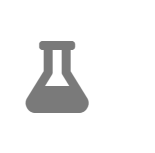Anti-SARS-Cov-2 Antibody Cocktail with IgG-IgA Technology

Mucosa-Enriched Antibodies: The Next Generation Therapeutics against Infectious Diseases
With the mammalian expression platforms above, AntagenPharma offers rapid and comprehensive services for production of recombinant proteins and different types of antibodies worldwide. The excellence in developing glyco-engineered therapeutic antibodies is expected to put AntagenPharma in an advantageous position in the global market of biologics.
Equiped with top-notch technology platforms, especially IgG-IgA Technology, AntagenPharma is also developing treatment on viral infections in respiratory system, gastrointestinal tract and/or reproductive system.

Our Method: IgG-IgA hybrid mimicking sIgA function in mucosa transcytosis
We created an IgA mimicry of IgG, with its Fc portion in fusion with the 18-aa tail piece (tp) of sIgA and the J chain, possessing sIgA’s full binding activity towards polymeric immunoglobulin receptor that mediates mucosa transcytosis. This IgG-IgA hybrid contains sufficient structural requirements for full binding to polymeric immunoglobulin receptor (pIgR), mimicking sIgA function in mucosa transcytosis against infectious agents such as diphtheria toxin and SARS-Cov-2.
We believe that by adopting this technology, the enrichment of i.v. injected IgG in lung mucosa can be increased by at least 30-fold. This can greatly reduce the treatment cost in patients receiving anti-SARS-CoV-2 neutralizing antibodies. For technology details, please click here.
Glyco-Engineered Immunotherapeutics

Glyco-Engineered Antibodies: The Next Generation Immunotherapeutics
Monoclonal antibodies (mAbs) are currently the largest and fastest growing class of biopharmaceuticals, and they address unmet medical needs, e.g., in oncology and in auto-immune diseases. Their clinical efficacy and safety is significantly affected by the structure and composition of their glycosylation profile which is commonly heterogeneous, heavily dependent on the manufacturing process, and thus susceptible to variations in the cell culture conditions. Glycosylation is therefore considered a critical quality attribute for mAbs. Commonly, in currently marketed therapeutic mAbs, the glycosylation profile is suboptimal in terms of biological properties such as Antibody-Dependent Cell-mediated Cytotoxicity (ADCC) or may give rise to safety concerns due to the presence of non-human glycans.

Our Method: Host Cell Line Engineering
Monoclonal antibodies (mAbs) are currently the largest and fastest growing class of biopharmaceuticals, and they address unmet medical needs, e.g., in oncology and in auto-immune diseases. Their clinical efficacy and safety is significantly affected by the structure and composition of their glycosylation profile which is commonly heterogeneous, heavily dependent on the manufacturing process, and thus susceptible to variations in the cell culture conditions. Glycosylation is therefore considered a critical quality attribute for mAbs. Commonly, in currently marketed therapeutic mAbs, the glycosylation profile is suboptimal in terms of biological properties such as Antibody-Dependent Cell-mediated Cytotoxicity (ADCC) or may give rise to safety concerns due to the presence of non-human glycans.

Our Focus: Therapeutics with Glycosylation as MOA
Any therapeutics that glycosylation, particularly fucosylation and/or sialylation, affects its biological functions is our point of focus. For example, we have expressed and verified a battery of anti-cancer antibodies with >50 fold enhanced ADCC through complete defucosylation in our Fut8-/- CHO cell line. We have also been supported by NIH SBIR programs to develop HIV vaccines in our engineered CHO-ES(6) cell line with unique alpha2,6 sialylation on Env protein, which has been shown to be required for the development of broad neutralization antibodies. Other ongoing projects involve therapeutics with simultaneous defucosylation and sialylation for treating autoimmune disorders, mitigating pathogenic cytokine storms and viral entry in infectious diseases.

